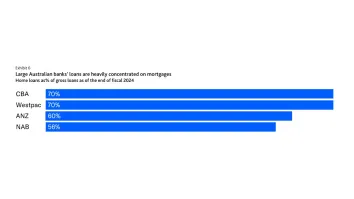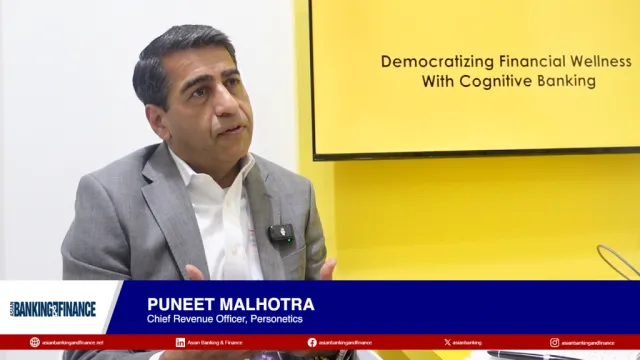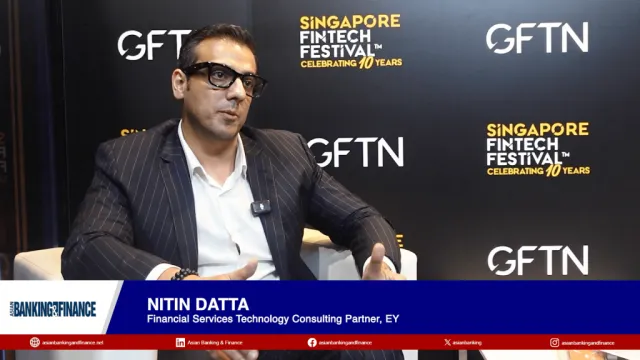
Equinix empowers banking modernisation and interconnection across Malaysia and Southeast Asia
Experts explored how hybrid multi-cloud strategies and interconnected data centres are shaping the future of banking in the region.
As Asia’s financial institutions accelerate their digital transformation, many continue to grapple with the challenges of modernising legacy infrastructure, particularly around cost and ROI justification, compliance and data sovereignty, and organisational resistance to change.
To explore how financial institutions can overcome these challenges, Asian Banking & Finance, in partnership with Equinix, hosted the “Modernising Banking: Unlocking Growth with Interconnected Data Centres in Malaysia and Southeast Asia” webinar on 14 October 2025. The session gathered regional banking and financial leaders to examine how interconnected digital infrastructure is shaping the future of modern banking.
The discussion was led by Equinix’s Luke Lee, APAC Solution Lead, and Gareth Bridges, Director, Financial Services, Asia-Pacific, with Simon Hyett, Contributing Editor at Asian Banking & Finance, serving as host and moderator.
Unlocking growth through interconnection
When a major bank’s mobile app goes offline, the cause may not lie in the application or cloud, but in the connectivity between them. This is a reminder that digital resilience depends on seamless interconnection.
Interconnection traffic in the banking and finance sector is growing at a remarkable 50% CAGR, signalling how quickly the industry is evolving. Banks in the region are increasingly shifting towards hybrid multi-cloud strategies, which combine private and public environments to achieve greater control, security, privacy, and predictable costs. Yet success depends on how and where such environments are deployed.
"A distributed hybrid multi-cloud architecture places data and workloads where they are needed, close to the cloud, partners, and customers. Data storage and traffic are kept as local as possible. But this improves performance and helps to meet regulatory requirements," Lee said.
He illustrated this with real-world examples, including PAObank, which accelerated AI-driven credit modelling by deploying a hybrid cloud at Equinix Hong Kong, and a multinational bank that leveraged Equinix’s interconnected infrastructure to consolidate operations across three regions, achieving greater scalability across markets.
As the Southeast Asia BFSI market grows rapidly, hybrid multi-cloud delivers scalability whilst maintaining control and security, helping banks address modernisation challenges. As Lee put it, “Think of your digital infrastructure like a house. A solid foundation is essential for your modernisation journey. Don’t let it be an afterthought; plan early.”
Building a connected financial ecosystem
Exploring how interconnection and collaboration are shaping the region’s modern banking landscape, Bridges explained that financial institutions increasingly depend on partnerships to deliver digital services. “Fintechs need the banks because of their client base, and the banks need the fintechs because of their technological capabilities,” he said. This dynamic, he added, has created a meshed infrastructure where seamless integration between banks, fintechs, and service providers is vital.
He highlighted how Equinix’s global ecosystem simplifies this complexity by allowing banks to integrate with partners within a single, secure environment. This streamlined approach reduces risk, improves performance, and simplifies connectivity across the financial ecosystem.
Addressing how banks can balance modernisation with cost efficiency, Bridges emphasised that transformation and fiscal discipline can go hand in hand. “You can modernise without incurring additional costs. Sometimes the modernisation process will ultimately drive down costs,” he explained, noting that decentralisation reduces latency and enhances user experience.
He also pointed out that local regulations can both guide and limit cloud adoption. “In certain jurisdictions, there’s almost an aversion to putting anything in the public cloud, which can be perceived as an obstacle,” he said. To overcome this, he suggested greater standardisation around connectivity and working with consistent providers across regions to achieve simplicity and efficiency.
Bridges also addressed the impact of emerging technologies, noting that AI and real-time analytics are increasing power density and infrastructure demands. “As intelligent applications become more intelligent, there tends to be a higher density of power that’s consumed for each server,” he explained.
Building on the discussion, Bridges advised financial leaders to plan early and prioritise interconnection. Lee echoed this forward-looking view, reminding banks that technology is always evolving and that flexibility through hybrid multi-cloud is key to staying ahead.
As banking becomes increasingly digital, resilience and interconnection are essential. With its global ecosystem and expertise, Equinix empowers financial institutions to modernise securely, collaborate efficiently, and scale with confidence in a connected world.
Equinix connects more than 1,400 financial services firms, including 350 banks and 250 payment companies. These connections enable companies to innovate faster, launch new services, and expand into new markets with less friction.
Want to learn more about modernising through interconnection? Catch the full discussion here.



















 Advertise
Advertise










